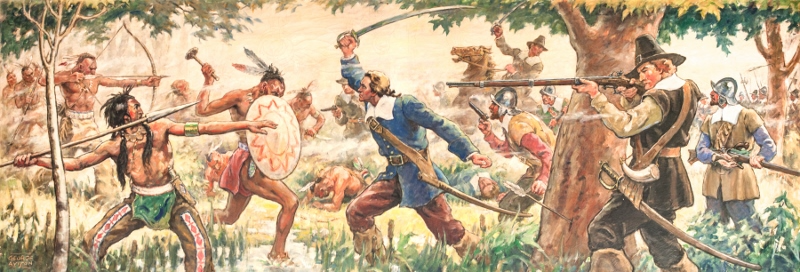
A mural in a middle school in Fairfield, Connecticut depicts the Pequot War
Christopher Columbus stands convicted in the public square.
His statues have been toppled, decapitated, and dragged into rivers in places like Boston, Baltimore, Richmond, Hartford, and New Haven. The charge: crimes against Native Americans.
Yet the irony could not be greater. Columbus had zero involvement with any and all atrocities against the Indigenous Peoples of the United States.
Columbus never set foot on the land that would become the United States. He died in 1506, more than a century before Jamestown or Plymouth were founded. The atrocities against Indigenous Peoples within America’s borders were not committed by Columbus, nor by Italians, nor by Spaniards. They were the work of Northern Europeans—English Puritans, Dutch traders, and French frontiersmen—whose descendants now lead the chorus to erase the Italian explorer from the American story.

A mural in a middle school in Fairfield, Connecticut depicts the Pequot War
⸻
Boston: Puritan Atrocities, Italian Scapegoats
In 2020, protestors beheaded the Columbus statue in Boston’s North End. The sculpture was a gift to the city from the Italian American community, there, in 1979.
Long before any Italian ever settled in Boston, the region was the site of two of the bloodiest wars in early American history.
In 1637, English colonists from Massachusetts and Connecticut waged the Pequot War, culminating in the Mystic Massacre, where over 500 Native men, women, and children were burned alive. Forty years later, King Philip’s War (1675–1676) brought annihilation to tribes across New England. Entire villages were destroyed, survivors sold into slavery, and the landscape cleared for English towns that would one day build Harvard and Beacon Hill.
Columbus had been dead for 130 years. Yet his likeness is condemned while Puritan icons are revered as “founders.”
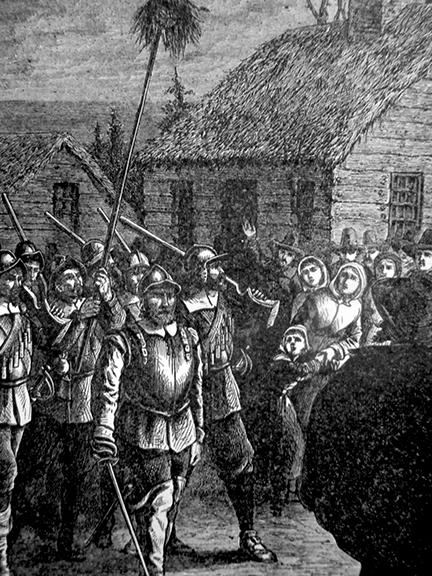
Victorious militiamen in King Philip's War carry the head of an
Indian they slayed in battle
———
Connecticut: The True Birthplace of Genocide
In New Haven and Hartford, Columbus monuments were removed in 2020. Both statues were originally erected by early 20th-century Italian immigrants who sought acceptance in an Anglo-dominated society. Those same cities were built on ground soaked in the blood of the Pequot people, annihilated in 1637 by English troops under Captain John Mason, a hero in Connecticut lore.
Contemporary reports describe colonists surrounding the Pequot fort and setting it aflame, killing everyone inside—including infants. Mason wrote afterward: “We must burn them. Such a dreadful sight it was to see them frying in the fire… but it was the Lord’s doings.”
No Spanish soldier was present. No Italian had yet arrived. The massacre was entirely English — an act celebrated by the same Puritan ancestors whose moral descendants now denounce Columbus as a monster.
John Mason’s monument stands tall today in Windsor while Columbus monuments in New Haven and Hartford were taken down.
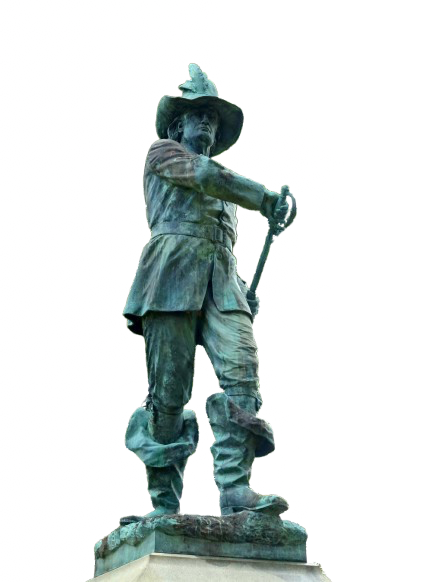
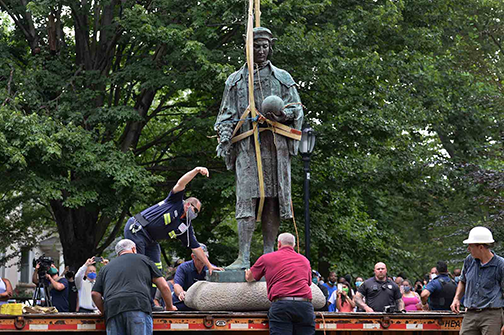
Statue of John Mason stands tall today in Windsor, Connectictut, while Columbus'
were taken down in New Haven and Hartford.
⸻
Baltimore and Richmond: The English Frontier
Baltimore and Richmond, founded 1729 and 1737, were under English colonial rule long after Columbus had died.
The region’s earliest conflicts were not voyages of discovery but wars of conquest — between English militias and the Susquehannock and Richahecrian tribes. The Battle of Bloody Run (1656) near Richmond saw English forces slaughter their own Indigenous allies and drive others from their lands. Maryland’s colonial government fought repeated campaigns to seize tribal territory along the Chesapeake.
In both cases, the violence that wiped out native populations came from Northern European settlers, not from Italians or Spaniards. Columbus’s name had no place in those wars—only his statues would arrive centuries later, as gifts from grateful immigrants—only to be lynched by a cheering crowd.
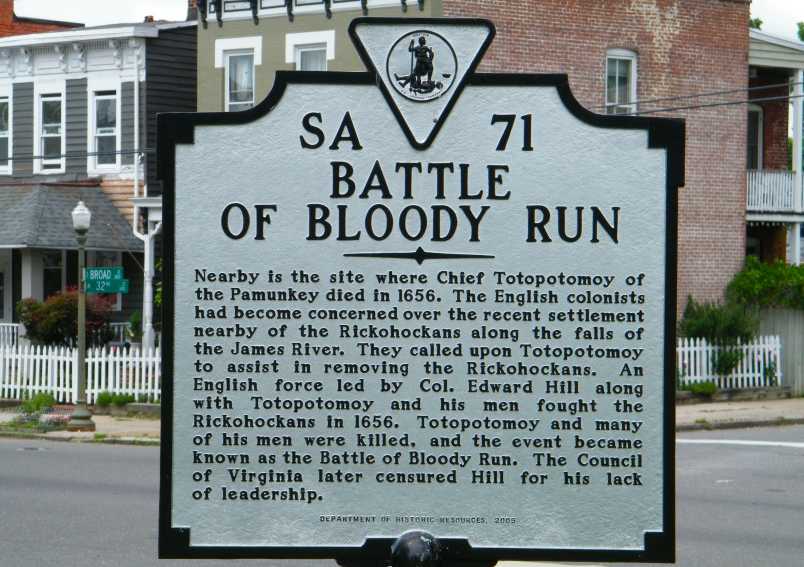
⸻
A Scapegoat for Northern Europe’s Sins
What we call “American colonialism” did not begin with Columbus. It began with Jamestown (1607), Plymouth (1620), and the Puritan theocracy of Massachusetts Bay—settlements established by English Protestants, not Iberian Catholics.
Those settlers declared war on the tribes whose land they coveted, sanctioned extermination, and celebrated their conquests as providence. They were the ancestors of modern New England and Mid-Atlantic society. Yet, as history’s guilt deepens, the moral blame is deflected southward—onto a Genoese mariner who never set foot in what became the United States. The closest Columbus ever got to America was Cuba.
We see before us the classic historical bait-and-switch: The sins of the North are pinned on the man from the South.
⸻
Italian Americans and the Inverted Symbol
When Italian immigrants began arriving in the late 19th century, they found themselves despised by the same Anglo-Protestant establishment that glorified Puritan heritage. Italians were lynched in New Orleans, excluded from trades, and branded “foreigners.”
They chose Columbus as their symbol precisely because he represented an Italian contribution accepted by the American mainstream—a Catholic whose voyage had become national mythology. Erecting his statue was not an act of conquest, but of gratitude and belonging.
Today, those statues are torn down by people who inherited the cities Italians helped build—people who speak of justice while destroying the one monument Italians ever claimed as their own.
⸻
History Demands Precision, Not Prejudice
To condemn Columbus for atrocities that occurred centuries later, and thousands of miles away, is not history — it is scapegoating. The record is clear:
• Columbus landed in the Caribbean, never on the American mainland north of Cuba.
• The genocides within the U.S. were carried out by Northern Europeans.
• The Columbus monuments were built by Italian Americans seeking dignity, not domination.
To tear down Columbus is not to heal America’s wounds; it is to misdiagnose them. The true reckoning with history begins: Stop punishing Columbus and others who had no part in the atrocities you now condemn.
—————————————————————————————————————————————————————————————————————————————
Please visit our DVDs Page to shop our latest collection of DVDs on all things Italian: Films from Italy's Golden Age, Documentaries on Italian American life, ancient Rome, and religion.
Please visit our Books' page to review our latest inventory of books on all things Italian: cookbooks, history, art and culture.
Other articles to read...